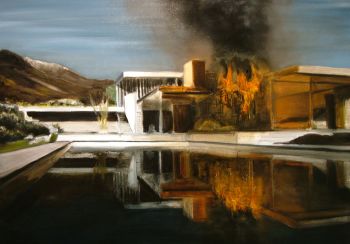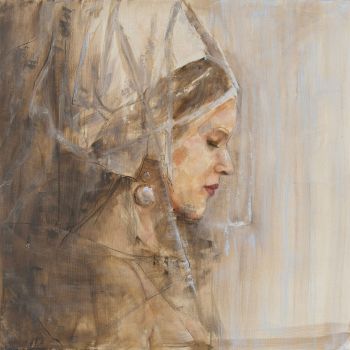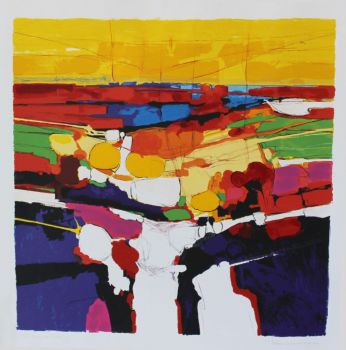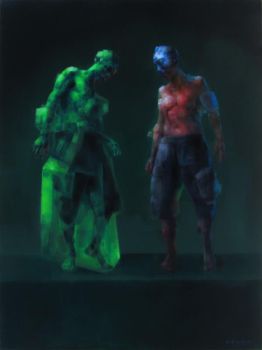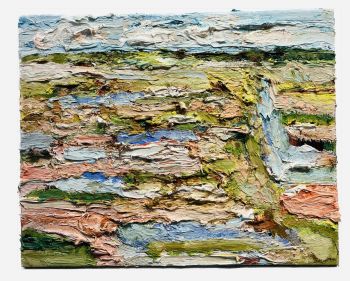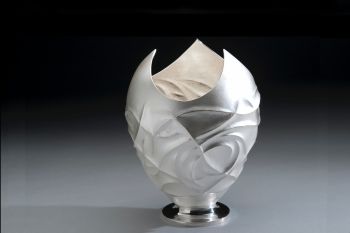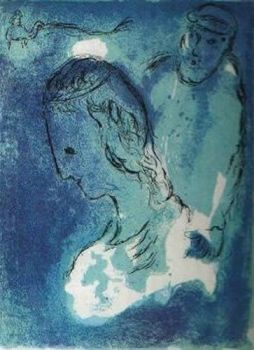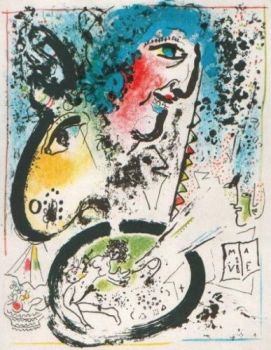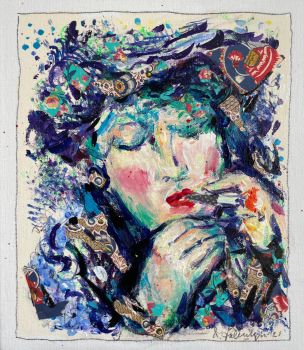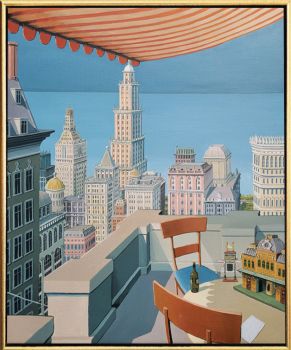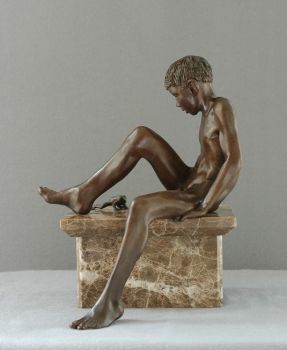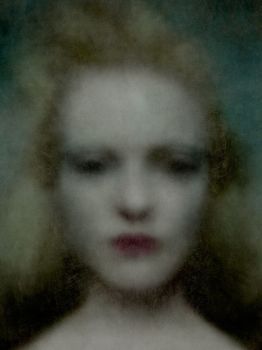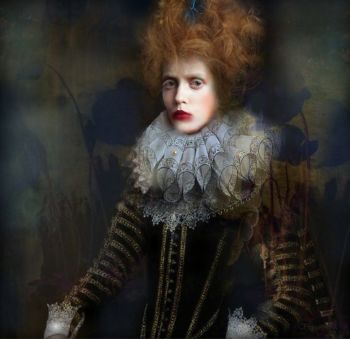The difference between Modern Art and Contemporary Art explained
"How do we distinguish modern and contemporary art?" That's a question which is frequently asked by newcomers to the art market. Thankfully, the transition between these two art styles has been thoroughly described by art historians. In this article we outline the main differences as we take a look at the most representative works of modern and contemporary art.
Modern art and abandoning the classical principles
Manet's 'Déjeuner sur l’ herbe' (fig. 1), is one of those revolutionary examples. It was first exhibited at the 1863 Salon des Refusés, a popular exhibition in Paris where all of the rejects from the official Salon exhibition were assembled. There, it generated laughter and outrage. 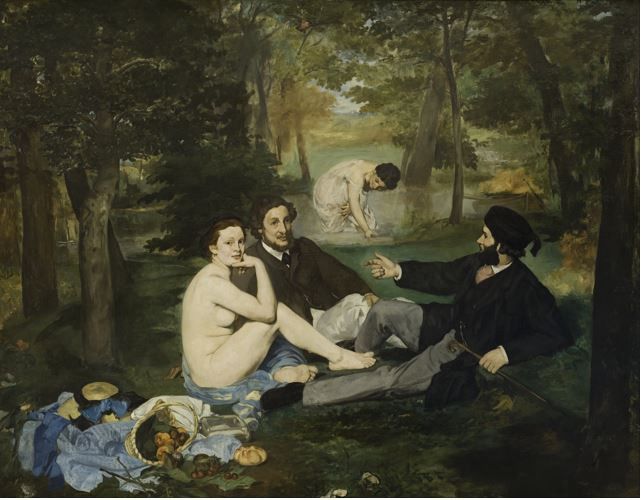
Evidently the public was most upset by the "ordinary" setting. The painting depicts a nude woman in the company of two men dressed in everyday attire, enjoying a picnic in the grass. It completely ignores the classical and mythological tradition, causing the woman's nudity to be perceived as inappropriate.
Furthermore, critics could not wrap their heads around the unrealistic representation of the woodlands and were especially offended by the bathing girl in the background who served no purpose in this painting.
Modern art and defying the representational role
While Manet’s work distressed critics, it paved the way for the Post-Impressionists. They distinguished themselves by their choice of subject matter and their rejection of a collective way of seeing. Paul Cézanne (1839-1906) was one of the leading Post-Impressionists; in his work he focussed on the lines and planes and colours that comprise nature, resulting in a more abstract picture.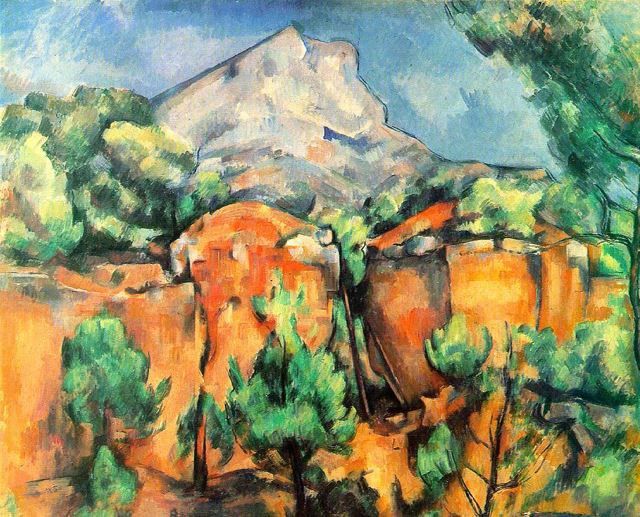
In the painting 'Mont Sainte-Victoire Seen from Bibemus Quarry' (1897, fig. 2), Cézanne translated his direct observations of nature into small patches of warmer and cooler colours, bringing about a shift in common perception.
Modern art and fragmenting forms
Inspired by Cézanne’s endeavours to free the art of painting from its representational role and instead to focus on pure forms, Pablo Picasso (1881-1973) pushed the boundaries of abstraction even further.
'Les Demoiselles d’ Avignon' (1907, fig. 3) is perhaps one of the most characteristic examples of this transition. The painting depicts five female nudes, yet their forms have been fragmented and interwoven with the equally jagged background. Through this painting, Picasso completely abandoned the traditional concept of a unified pictorial space for the first time in history.
The painting laid the foundations for the Cubism movement, in which a subject is fragmented into its geometrical components and often represented from several angles at once. Although the Cubists hyper fragmented their subjects, the forms always remained recognisable.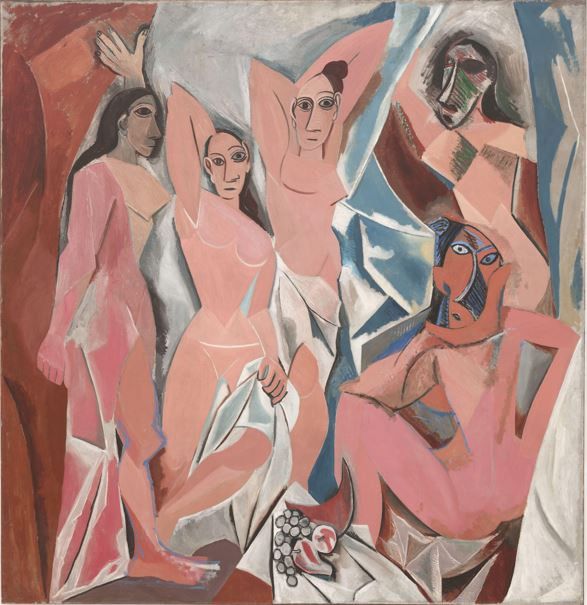
Modern art and non-objectivity
Fuelled by his interest in philosophy, religion, innovative scientific theories and music, Wassily Kandinsky (1866-1944) was one of the first artists to paint in an entirely non-objective manner, exemplified by 'Composition VII' (1913, fig. 4). This painting displays the artist’s repudiation of pictorial representation through a tumultuous rolling of shapes, colours and lines, demonstrating no discernible point of departure in the portrayal of recognizable subjects.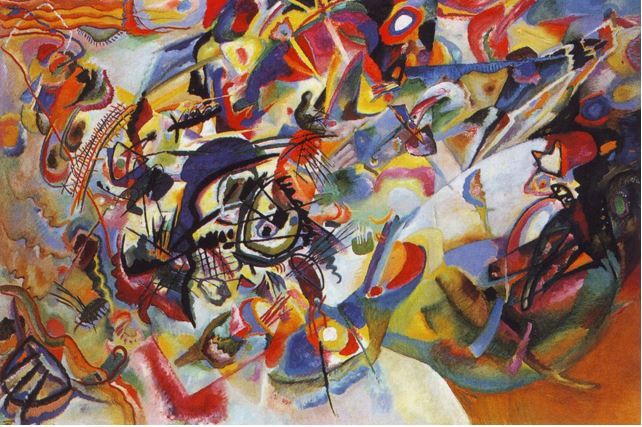
Even though the artistic ambitions of Manet, Cézanne, Picasso and Kandinsky differed, all of their work is considered to be Modern Art. Modern Art presented an aesthetic response to modernity; to fundamental changes in society brought about by the industrial revolution and the introduction of the modern capitalist economy.
As a result, artists began breaking down forms and questioning the representational role of paintings. This slowly developed through a series of artistic movements. Besides Impressionism, Post-Impressionism and Cubism, movements such as Symbolism, Fauvism, Futurism, Suprematism, Constructivism, Dadaism, Surrealism and Abstract Expressionism also belong under the umbrella of Modern Art.
Contemporary art and concept vs. finished product
Most art historians will pin-point the late 1960's as a major turning point for the art world. Generally speaking, art created after this point in time may be considered as Contemporary Art, including conceptual art, performance art, minimalism, pop art, and video art. As of the late 1960's, the underlying concept became more important than the aesthetic qualities of the work.
For the first time in history, the process of making art received more attention than the final product. That process sometimes even required the participation of the audience, such as Yves Klein’s 'Performance Anthropometries of the Blue Period' (1960, fig. 5).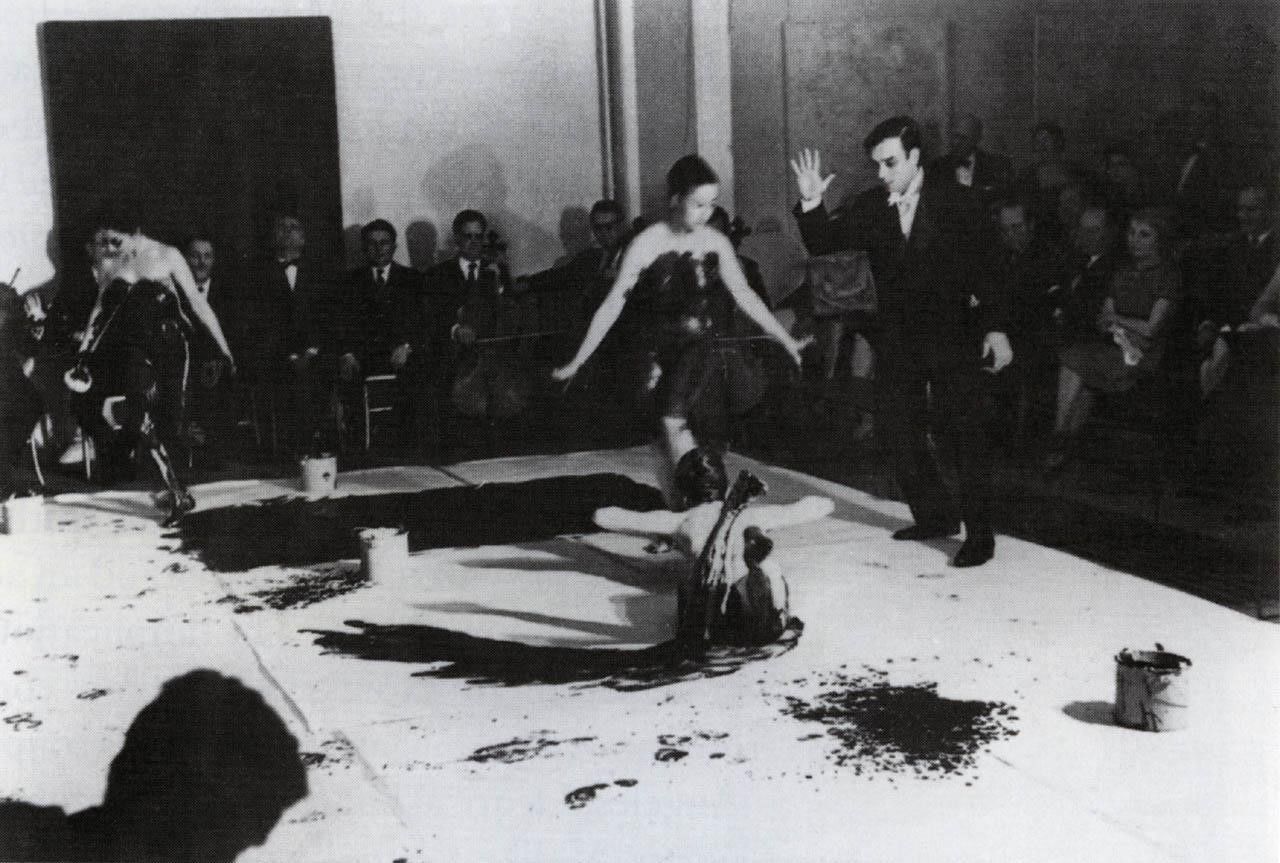
But it was also the meaning and the cultural value of art itself which was questioned by artists. A celebrated example is Joseph Kosuth’s (1945) first conceptual work 'One and Three Chairs' (1965, fig. 6), in which a real chair is accompanied by a photograph of the chair and the dictionary definition of the word “chair”.
This slippery juxtaposition suggests that the image and the text have become interchangeable, consequently annihilating the traditional distinctions. By casting doubt onto the status of a photograph, Kosuth calls all representational art into question. This work laid the foundations of a trend that favoured the idea or the concept of a work over the physical object.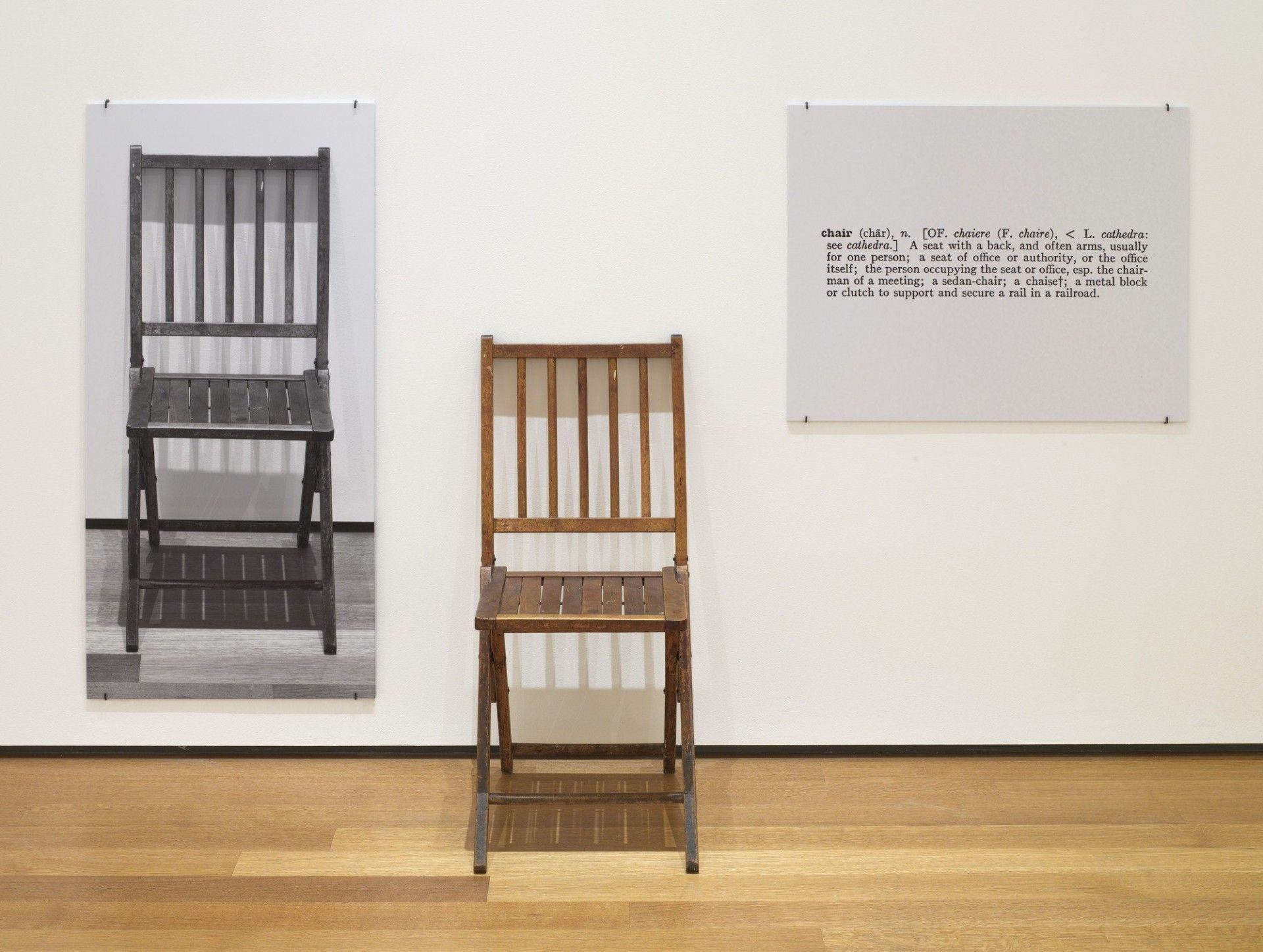
This intrinsic debate is essential to contemporary art. Other then that, contemporary art covers a million different styles and approaches to art.
Contemporary art and engagement
A lot of art produced in the last thirty years is also connected to social and political issues. The work 'Sirens of the Lambs' (2013, fig. 8), made by the street artist Banksy, shows a bunch of puppet animals peeking out of a truck, squeaking with fear. It forms a blatant critique on the casual cruelty of food industry.
And for instance, the controversial artist Damien Hirst (1965) creates figurative and non-figurative paintings and sculptures (fig. 7).
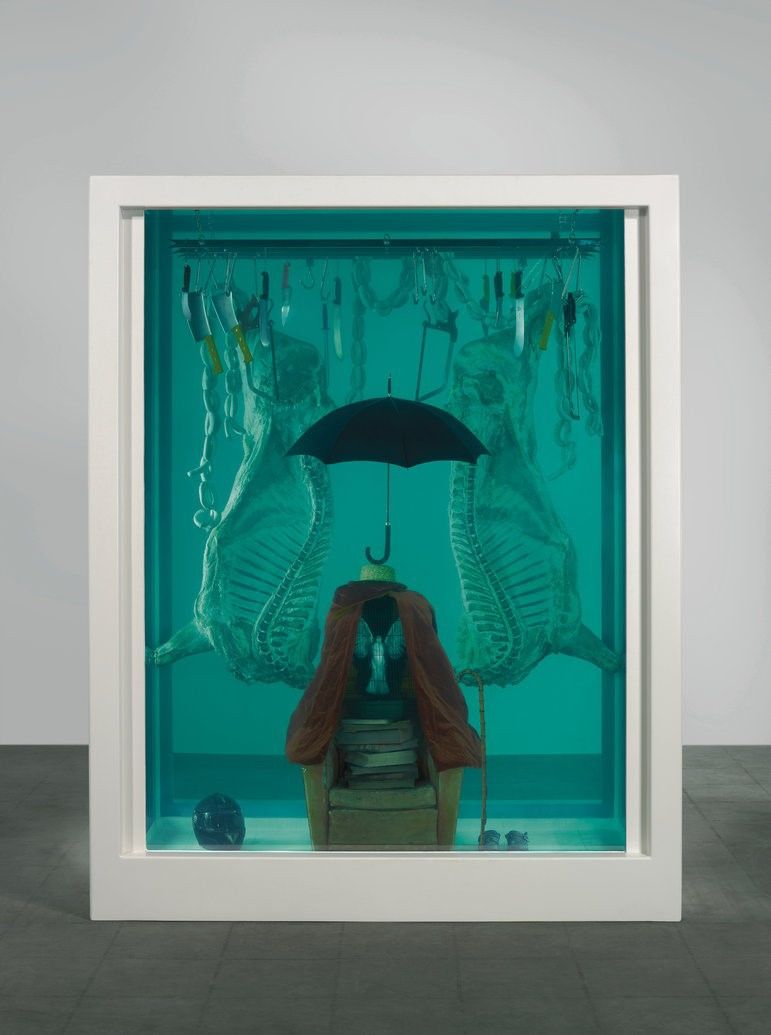
Conclusion: how to distinguish modern and contemporary art?
First of all, Modern Art and Contemporary Art are from two different periods. The Modern Art period includes work from the late 19th and early 20th centuries, roughly from 1880 through the 1960s. Modern Art is also often an expression of individuality. While Contemporary Art focuses more on social impact, with society as the primary focus. It can be also be said that Contemporary Art focuses on the present and the future and Modern Art refers to an era that has been passed.
We hope this article has provide you a better understanding between the differences between these two art styles.
If you are interested to see or buy available modern and contemporary artworks? Please, have a look at the Gallerease website for more Modern Art and Contemporary Art!
* The image in the header is "Color Study Squares with Concentric Circles" by Wassily Kandinsky, 1913. Watercolor, gouache and crayon on paper 9.4 × 12.4" (23.8 × 31.4 cm), Munich, The Städtische Galerie im Lenbachhaus



